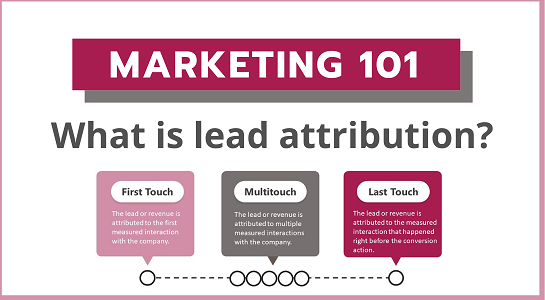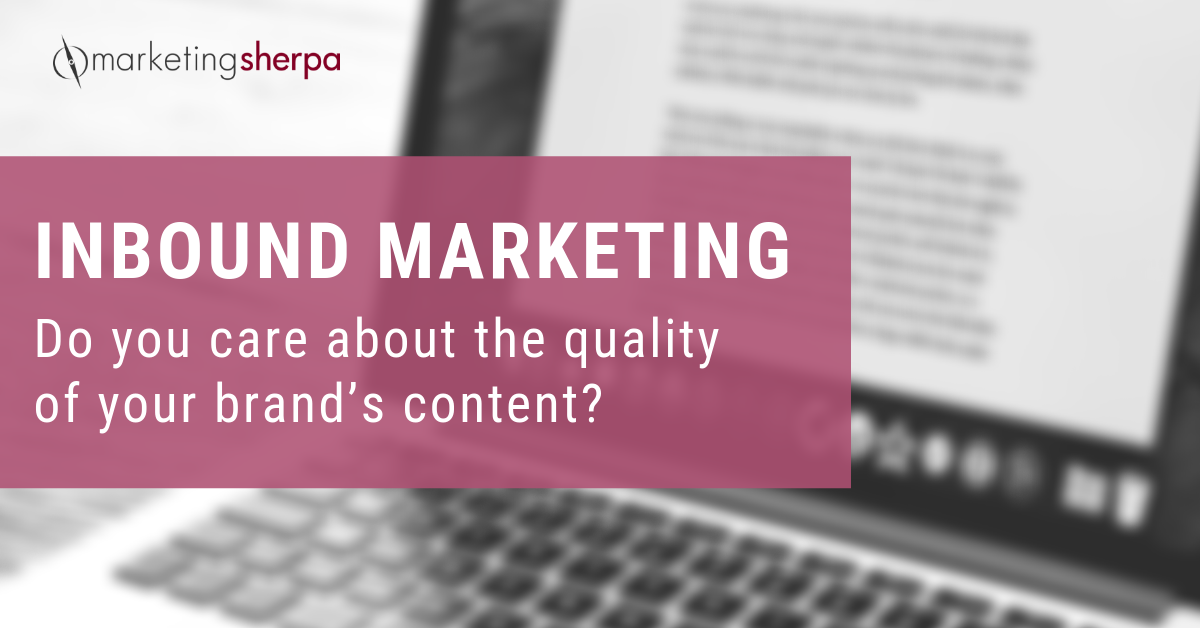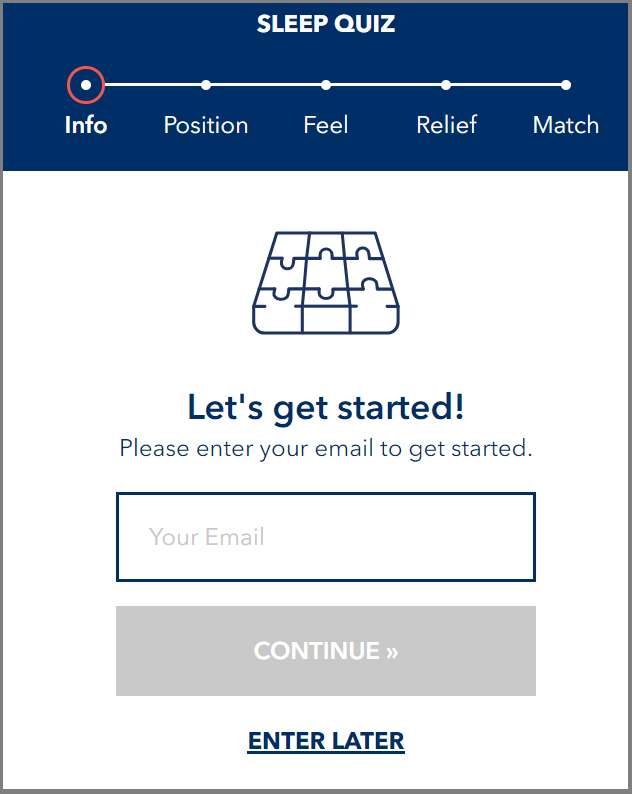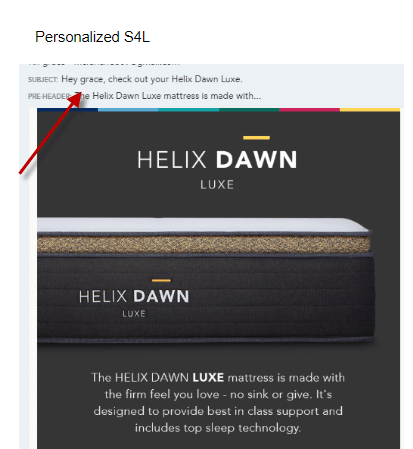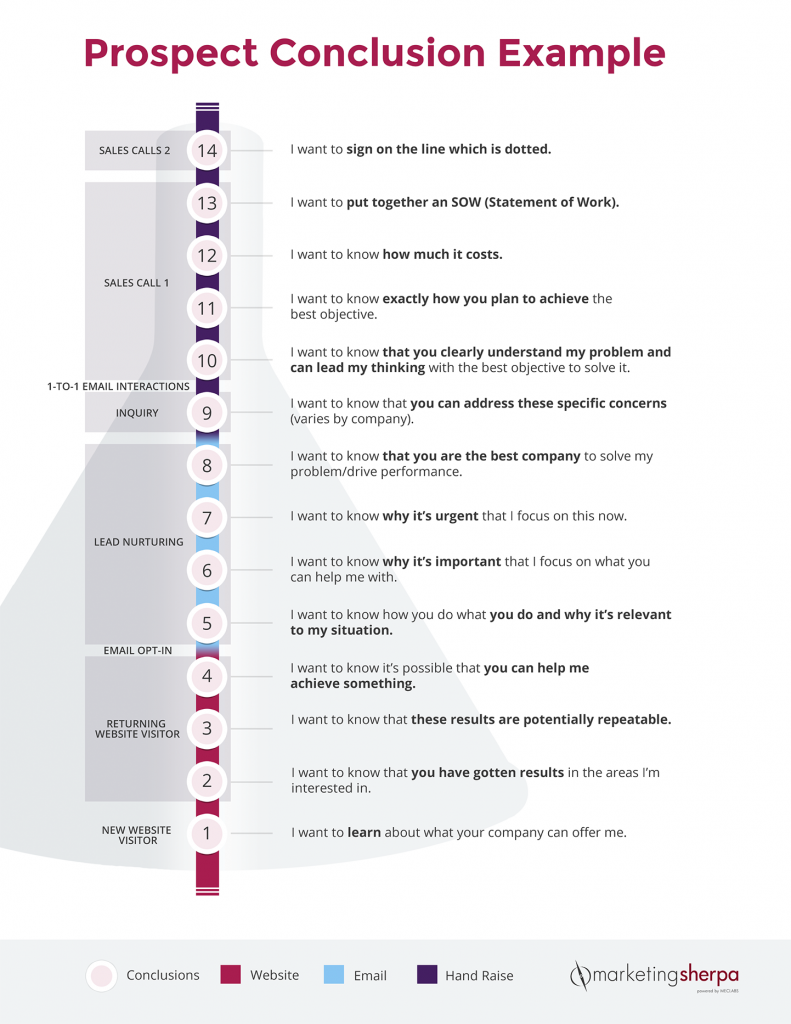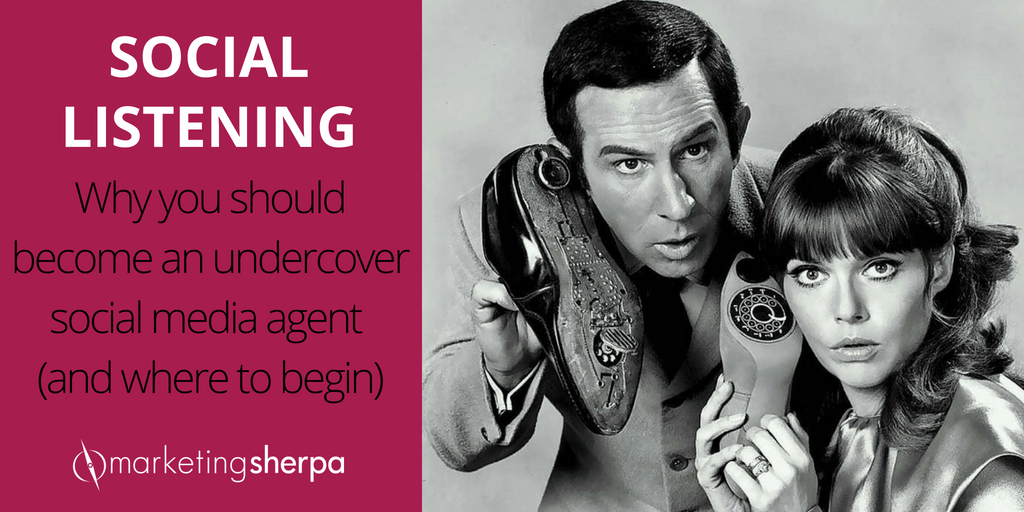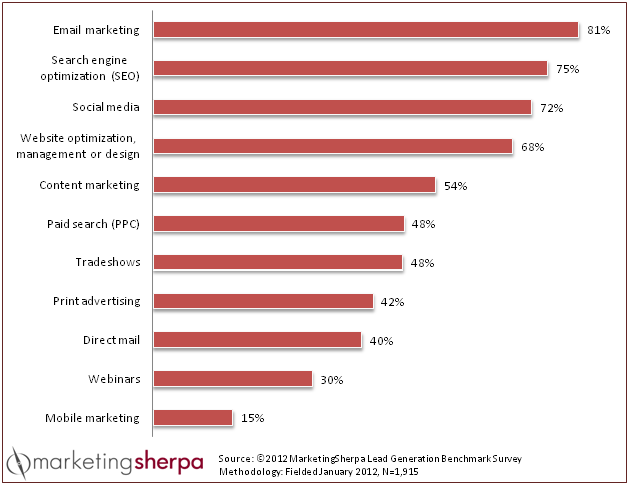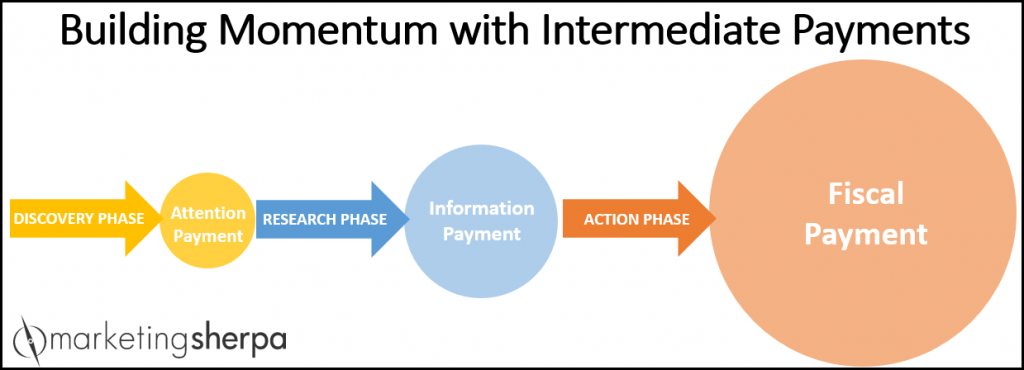Marketing 101: What is lead attribution?
Marketing has a language all its own. This is our latest in a series of posts aimed at helping new marketers learn that language. What term do you find yourself explaining most often to new hires during onboarding? Let us know.
This article was originally published in the MarketingSherpa email newsletter.
Lead attribution is the process of determining which marketing activities should be credited for bringing in a potential customer, also known as a lead.
The exact definition of what is considered a lead will vary based on the lead management process at each company, but for the purposes of this article, we will consider a lead as a potential customer that indicates interest in a company (for example, filling out a form or calling for more information).
Lead attribution is extremely valuable
Lead attribution is both extremely valuable and maddeningly difficult.
It is so valuable because if companies know which marketing activities produce leads, and which do not, they can optimize their marketing investment. As department store owner John Wanamaker famously said more than 100 years ago, “Half the money I spend on advertising is wasted; the trouble is, I don’t know which half.”
So even though lead attribution doesn’t have the creative glory of other marketing practices like copywriting, design, content marketing or branding, don’t overlook it. In fact, I’m writing this blog post because I received a question when I was waxing poetic about lead attribution in the recent article – 8 Mini Case Studies of Using Marketing as a Force for Positive Change in Our World While Getting Results for Your Company and Clients. In the article I say …
“Listen folks, I’ve been doing this a long time. So when I started looking for stories for this article, I had my assumptions about which marketing tactics this article was going to cover:
Landing page optimization to better communicate value —that’s a given.
Content marketing — probably more than one mini case study.
Better ad targeting — of course.
But lead attribution?
Valuable tactic? Absolutely. But it’s boring, behind the scenes, and has little direct correlation to bring about positive change for people. At least, that was that my assumption.
If you’ve had similar assumptions, check out this next story.”
The mini case study goes on to tell the story of how a marketing attribution technology helped fuel a little friendly competition between radio stations in a radiothon that ultimately raised $500,000 for Feeding America during the COVID-19 pandemic.
Which brings up the point — while lead attribution is the term I most often hear thrown about, attribution can be applied to any customer action that companies seek, including product purchases or, in the above case, donations during a radiothon. For that reason, there are other similar terms — like marketing attribution or revenue attribution – that refer to roughly the same thing: understanding which marketing or advertising (or even sales or public relations) activities contribute to a company achieving its goals.



